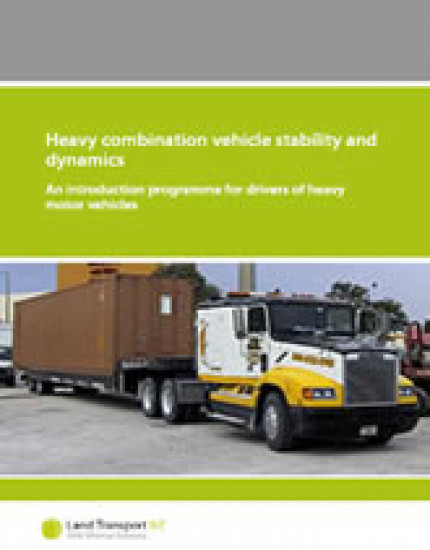An introduction programme for drivers of heavy motor vehicles

The Truck loading code sets minimum standards for load restraint and operators must familiarise themselves with it. These standards are designed to prevent load shift under normal operating conditions, including braking, acceleration, cornering and movement over uneven ground.
Any load that shifts will decrease vehicle stability dramatically, particularly during braking and cornering. Any loads positioned more than 100 millimetres away from the curtains or sides of a vehicle must be restrained in accordance with the Truck loading code, to prevent load shift during cornering.
Loads carried on a vehicle must be restrained according to the following basic rules. Restraints must:

The responsibility for loading the vehicle correctly, including making sure it is secured to the minimum requirements, as shown in the Truck loading code, rests with the driver. The responsibility starts at the time of loading. Placing loads that increase the height of the vehicle's CG or shift it off-centre (closer to one side) will reduce the vehicle's stability and dramatically affect its handling.
Drivers of vehicles with loads that have a high CG must drive more carefully, especially around curves.
The Land Transport Act 1998 contains the load security legislation that is administered by Land Transport New Zealand and enforced by the NZ Police. It provides strict liability for offences involving insecure loads and loads falling from vehicles. Offences attract fines for an individual of up to $2,000 and a licence may be disqualified for a period as the court thinks fit. The maximum fine for a body corporate is $10,000.
A Combined rated strength = 2W
Securing devices (lashings) have a combined rated strength of at least twice the weight of the load, where not loaded against a headboard.
B Combined rated strength = W
Securing devices (lashings) have a combined rated strength of at least the weight of the load, where packets are loaded against a headboard, such that the top packets have at least 150 mm supported.
C Combined rated strength = 1½W
Securing devices (lashings) have a combined rated strength of at least one and a half times the weight of the load, where lower packets are supported by a headboard but upper packets are not supported by at least 150 mm.
Failure of the load restraint could result in the load developing sufficient momentum, if allowed to slide, to demolish the headboard or other abutment with potentially serious consequences.
Traditional rope hooks or rings, and the method by which they are attached to the vehicle structure, cannot be relied upon for the restraint of other than light loads. For this reason, platform vehicles in particular should be equipped with load anchorage points, so designed and integrated into the structure that the maximum forces likely to be imposed on them are transmitted to the main chassis frame of the vehicle. It is common practice to utilise the coaming tie rails and, in this case, it is necessary to tie in the vicinity of the cross member and tie rail junctions to prevent distortion of the tie rail.
Each anchor point must have strength at least equal to the rated strength of the lashings secured.
Loose bulk loads can generally be described as having a nature which does not readily lend itself to any form of packaging or containerisation, eg sand, aggregate, shingle, rubble, rubbish, asphalt and other similar materials.
Clearly, the loading and securing of such loads do not pose the many problems associated with general freight, but nevertheless they do have security problems peculiar to themselves.